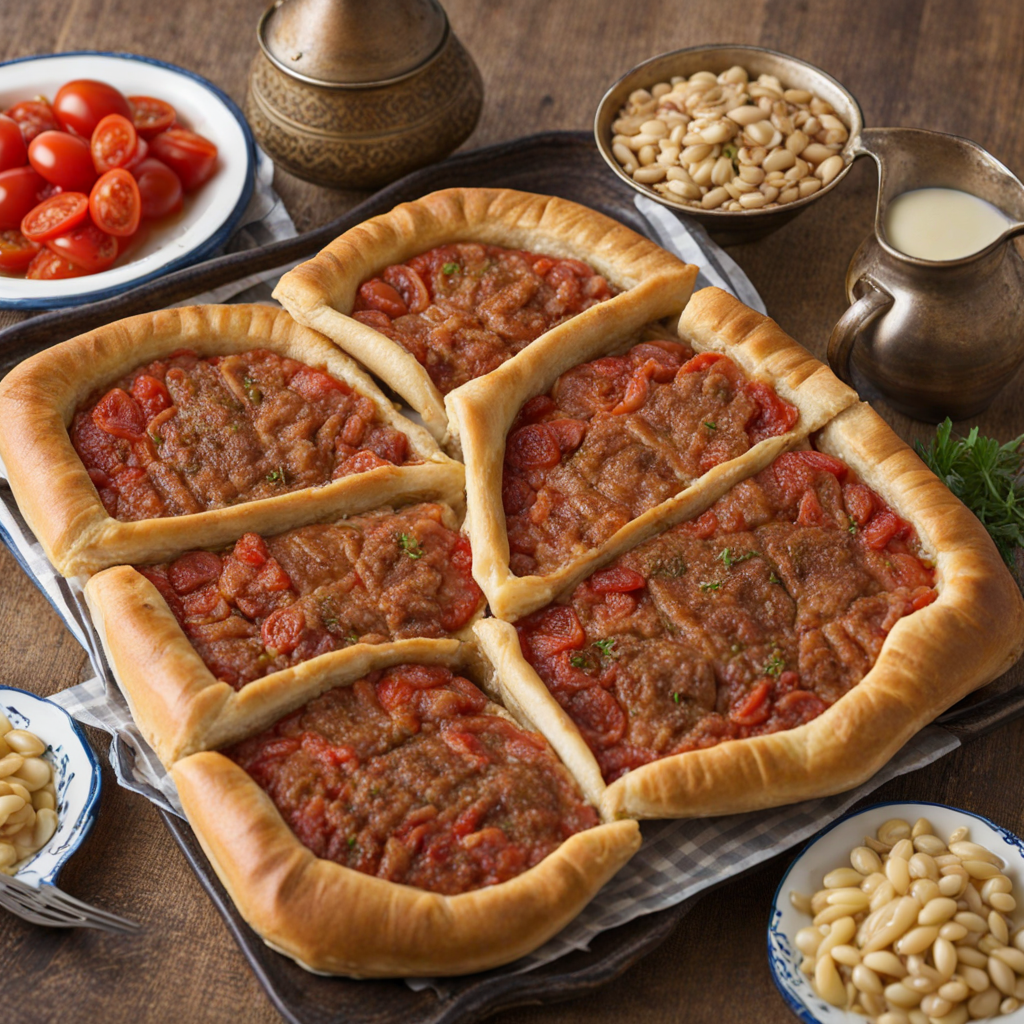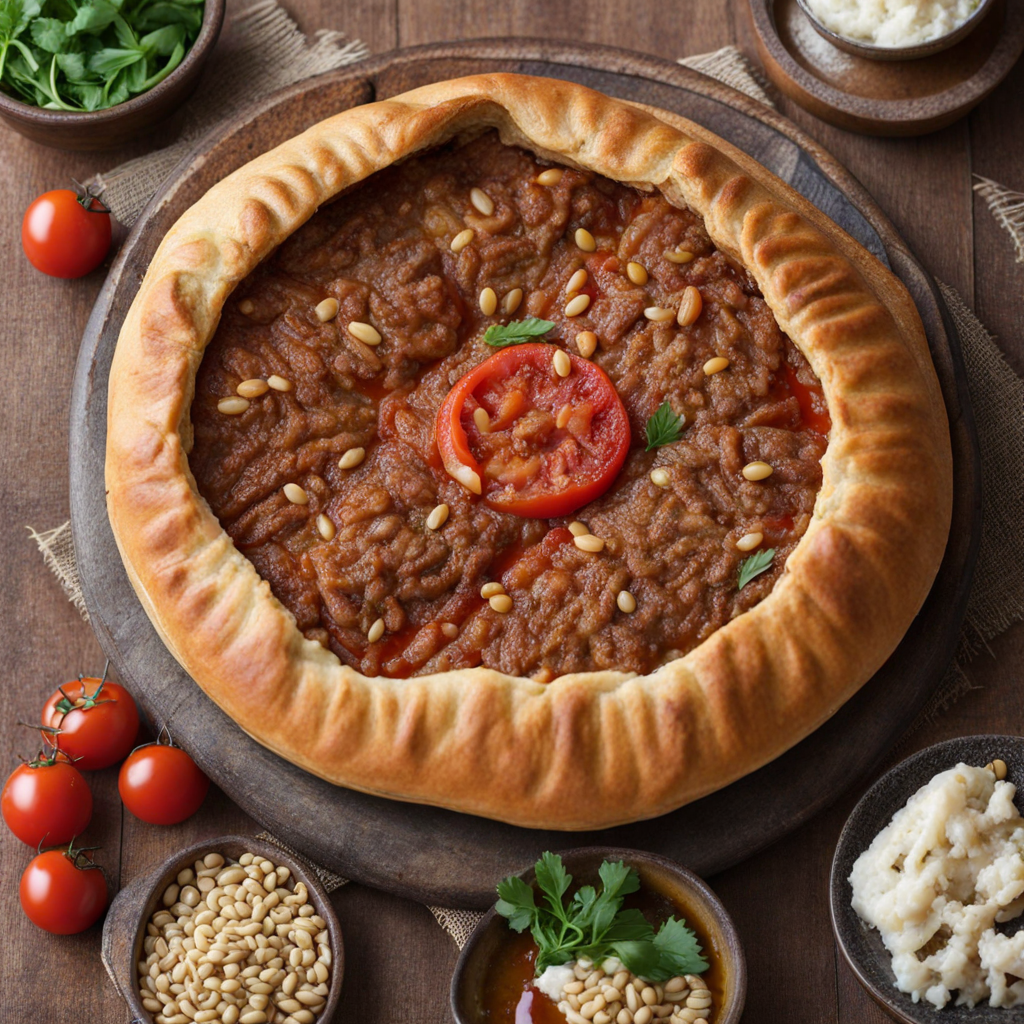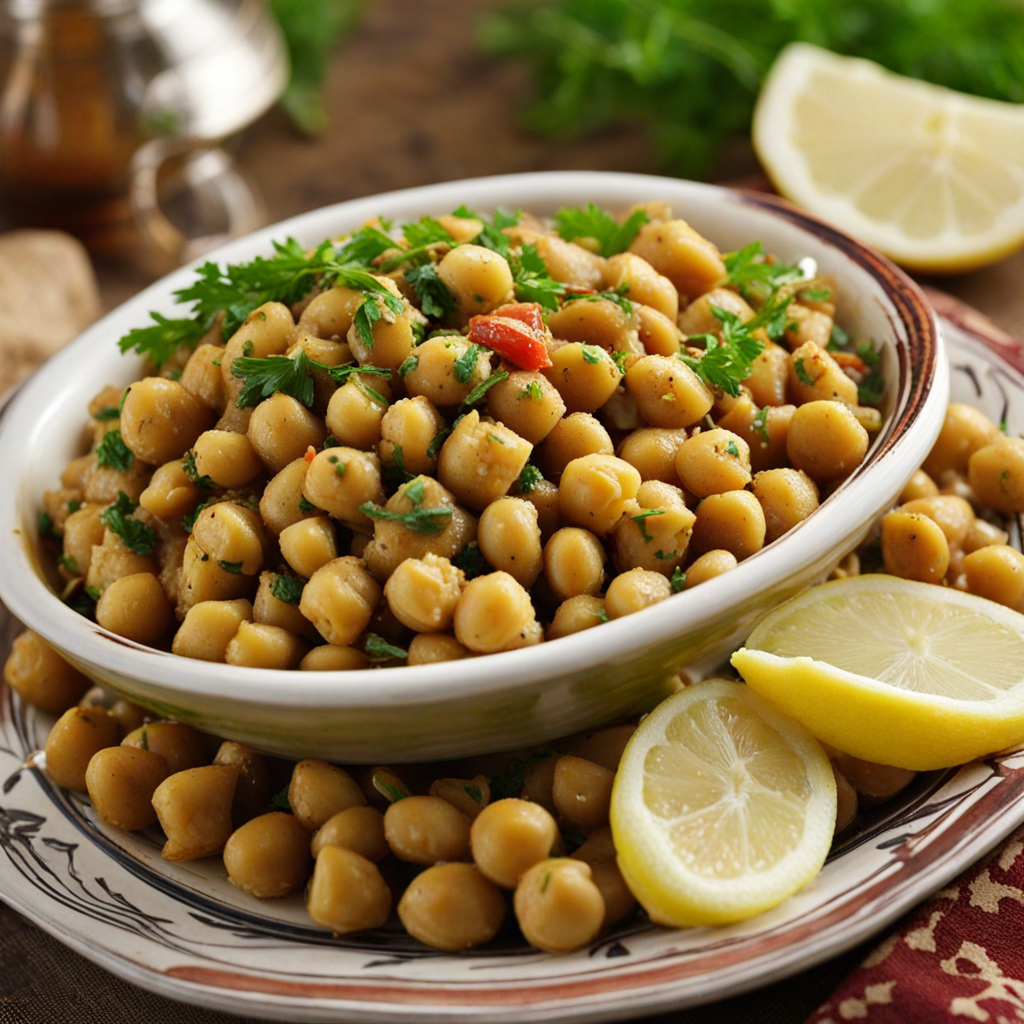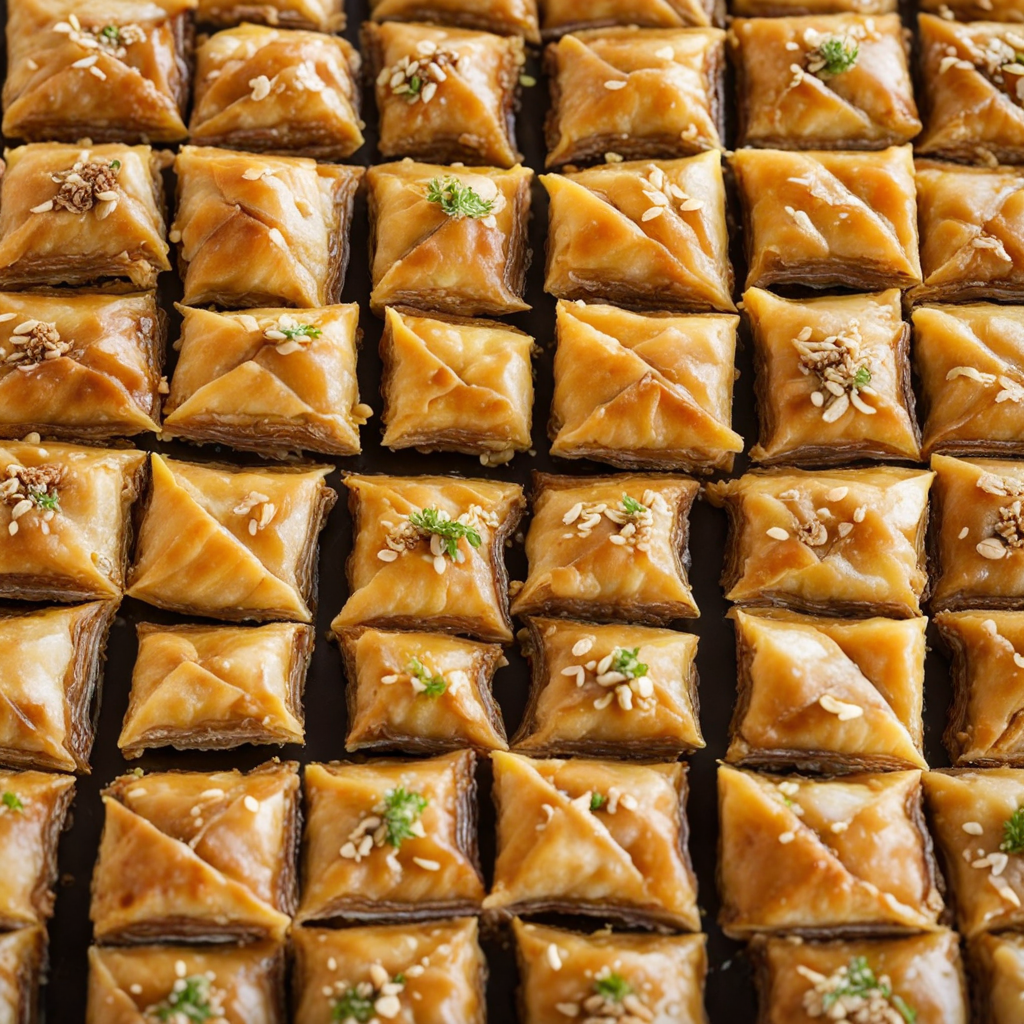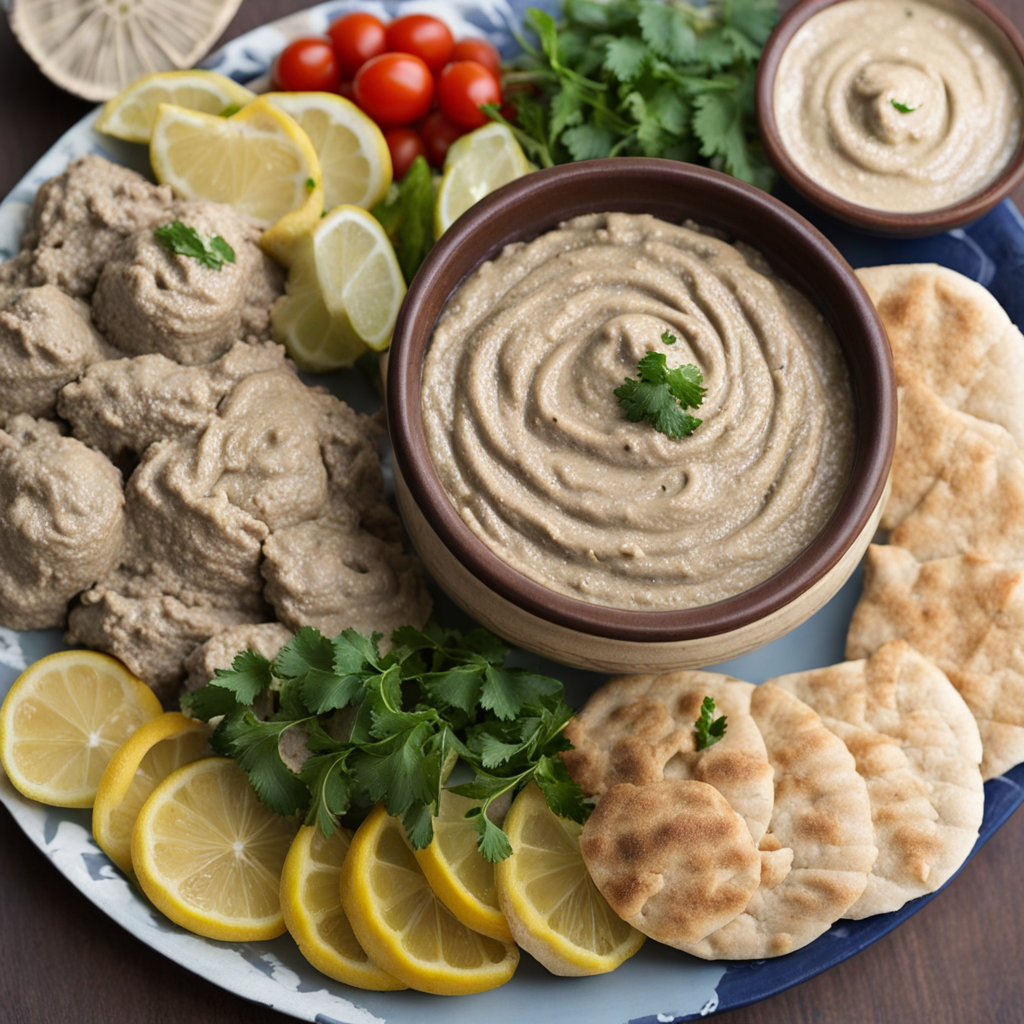Sfiha
Sfiha, often referred to as "Arabic pizza," is a delectable dish that originates from the Levantine region, including Jordan. This savory pastry features a thin layer of dough, typically made from flour, water, and yeast, which is then topped with a rich mixture of ground meat, usually lamb or beef, combined with aromatic spices such as cinnamon, allspice, and nutmeg. This unique blend of flavors is further enhanced by the addition of fresh herbs like parsley and mint, as well as diced tomatoes and onions, creating a harmonious symphony of tastes that is both savory and aromatic. The preparation of Sfiha is an art form in itself. The dough is rolled out into small circles, which are then generously topped with the seasoned meat mixture and shaped into either open-faced or closed pastries. The open-faced version showcases the vibrant filling, while the closed variant resembles a small pocket, making it perfect for dipping or enjoying on the go. Once baked to perfection, the pastries emerge golden and slightly crispy on the edges, offering a delightful contrast to the tender and flavorful filling inside. Sfiha is not just a dish; it’s a cultural experience that brings people together. Often served as an appetizer or snack, it can be enjoyed with a side of tangy yogurt or a fresh salad, making it a versatile option for any meal. Whether shared among friends at a gathering or savored solo, each bite of Sfiha transports you to the heart of Jordanian cuisine, inviting you to explore the rich heritage and culinary traditions of the region. The combination of textures and flavors creates a delightful experience that is sure to please the palate of anyone looking to discover something new and exciting.
How It Became This Dish
Origins of صفيحة صفيحة, also known as "sfiha," is a traditional dish that has become a beloved part of Jordanian cuisine. Its origins can be traced back to the Levant region, which includes modern-day Jordan, Lebanon, Syria, and Palestine. The dish is believed to have emerged from the culinary practices of the Arab communities during the Ottoman Empire, which spanned several centuries and facilitated the exchange of food traditions across its vast territories. The name "صفيحة" translates to "platter" or "disc" in Arabic, referring to the way the dish is typically prepared and served. It consists of a thin, round piece of dough topped with a savory mixture of ground meat, usually lamb or beef, combined with spices, onions, and sometimes pine nuts. This unique combination of ingredients reflects the agricultural practices and pastoral lifestyle of the region, where both livestock and grains were abundant. Cultural Significance صفيحة holds a special place in Jordanian culture, often served during family gatherings, celebrations, and communal feasts. It is a dish that embodies hospitality and the sharing of food, which is a cornerstone of Jordanian social customs. The preparation of صفيحة is often a communal activity, with family members gathering to roll out the dough, prepare the filling, and bake the dish together. This tradition not only strengthens familial bonds but also preserves the culinary heritage passed down through generations. In Jordan, صفيحة is more than just a meal; it is a symbol of identity and heritage. It reflects the rich history of the region, showcasing the blend of various cultural influences, including Ottoman, Arab, and even Mediterranean culinary traditions. As globalization has increased, the dish has transcended its local roots, becoming popular in Jordanian diaspora communities around the world, where it serves as a reminder of home and cultural identity. Development Over Time Historically, the ingredients and preparation methods of صفيحة have evolved with changes in agricultural practices, trade routes, and social dynamics. In the early days, the dish was primarily made with locally sourced ingredients, reflecting the seasonal availability of meats and vegetables. As trade expanded and new ingredients became accessible, variations of صفيحة began to emerge, incorporating spices and flavors from different cultures. The classic recipe for صفيحة typically includes ground meat seasoned with spices like cumin, allspice, and cinnamon, which are characteristic of Levantine cuisine. The dough is made from simple ingredients such as flour, water, and salt, which are staples in many Middle Eastern diets. Over time, as culinary techniques became more refined, variations in the dough’s richness and texture emerged, with some opting for a flakier crust while others prefer a thicker base. In contemporary Jordan, صفيحة is often found in restaurants and homes alike, with each family adding their unique twist to the dish. Some popular variations include adding vegetables or using different types of meats, such as chicken or turkey. Additionally, modern chefs have started to experiment with fusion styles, incorporating global flavors while maintaining the essence of the traditional recipe. Regional Variations While the Jordanian version of صفيحة is widely recognized, the dish can also be found in different forms across the Levant. In Lebanon, for example, sfiha is often topped with a mixture that includes tomatoes and is sometimes served open-faced, allowing for a more pronounced flavor profile. In Syria, the dish may include additional toppings, such as yogurt or tahini sauce, enhancing its richness. These regional variations highlight the adaptability of صفيحة and its ability to incorporate local tastes and preferences. The dish not only represents a shared culinary tradition among neighboring countries but also serves as a canvas for creativity, allowing cooks to express their personal and regional identities through food. Modern Popularity In recent years, صفيحة has gained popularity beyond the borders of Jordan and the Levant. As Middle Eastern cuisine has garnered attention worldwide, this dish has found its way onto menus in restaurants catering to diverse audiences. Food enthusiasts have embraced the rich flavors and textures of صفيحة, leading to its inclusion in food festivals, cultural events, and international culinary competitions. Social media has played a significant role in promoting traditional dishes like صفيحة, with food bloggers and influencers showcasing recipes and cooking techniques to global audiences. This digital exposure has sparked interest in the dish, encouraging people to explore its origins and cultural significance. As a result, صفيحة has become a symbol of culinary heritage that is celebrated not only in Jordan but also in various parts of the world. Conclusion: A Dish of Unity Ultimately, صفيحة serves as a testament to the power of food in bringing people together. It encapsulates the shared history and cultural ties of the Jordanian people and their neighbors, bridging divides through a universal love for good food. The preparation and enjoyment of صفيحة remain a cherished tradition, reflecting the importance of family, community, and the celebration of cultural heritage in Jordan and beyond. In a world that continues to evolve rapidly, the enduring popularity of صفيحة demonstrates the resilience of culinary traditions and their ability to adapt while remaining rooted in history. Whether enjoyed at a family gathering or in a bustling restaurant, صفيحة continues to be a beloved dish that nourishes not only the body but also the soul.
You may like
Discover local flavors from Jordan


